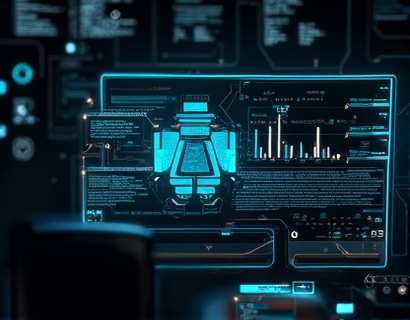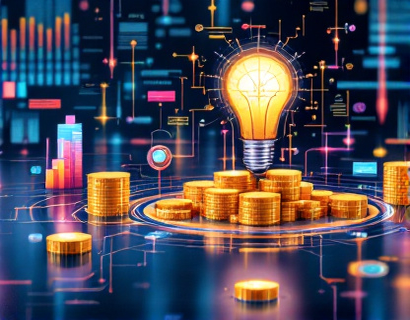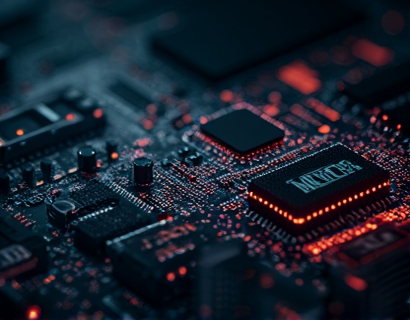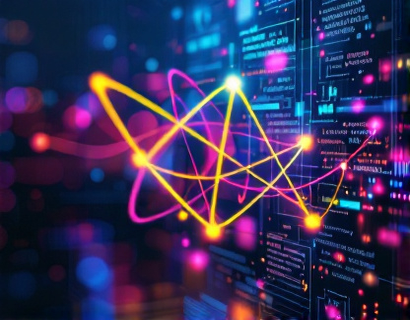Decentralized Innovation: Harnessing AI and Crypto for Next-Gen Digital Transformation
The intersection of artificial intelligence and cryptocurrency is giving rise to a new era of digital transformation, characterized by decentralized innovation. This synergy is not just about combining two powerful technologies but about creating an ecosystem where user experience and engagement are paramount. The emergence of decentralized applications (dApps) and services is redefining how we interact with digital platforms, offering a more secure, transparent, and user-centric approach.
Decentralized applications leverage blockchain technology to operate without a central authority, ensuring that data and transactions are managed collectively by network participants. When combined with AI, these applications gain the ability to learn from data, adapt to new inputs, and perform tasks that traditionally required human intervention. This combination is driving a paradigm shift in how we design and interact with digital services.
Understanding Decentralized Applications
Decentralized applications are built on blockchain networks, which provide a secure and immutable ledger for transactions. Unlike traditional applications that rely on centralized servers, dApps distribute their functions across a network of computers, making them more resilient to attacks and failures. This decentralization also means that users have greater control over their data, as it is stored on their devices rather than on remote servers.
The architecture of a typical dApp includes a front-end user interface, a smart contract on the blockchain, and a decentralized back-end service. The smart contract enforces the rules and logic of the application, ensuring that all transactions are executed as intended. This setup not only enhances security but also reduces the risk of censorship and manipulation.
AI in Decentralized Applications
Integrating AI into dApps amplifies their capabilities, enabling them to offer intelligent, adaptive, and personalized experiences. AI algorithms can analyze vast amounts of data to identify patterns, make predictions, and automate decision-making processes. In the context of decentralized applications, AI can be used for various purposes, such as enhancing user interactions, optimizing resource allocation, and improving security measures.
For instance, AI-powered chatbots can provide 24/7 customer support within a dApp, offering instant responses to user queries and enhancing the overall user experience. Machine learning models can analyze user behavior to recommend personalized content or services, increasing user engagement and satisfaction. Additionally, AI can be employed to detect and prevent fraudulent activities, ensuring the integrity of the decentralized ecosystem.
Enhancing User Experience through Decentralized Innovation
The primary goal of decentralized innovation is to create digital solutions that prioritize user experience and empowerment. By removing intermediaries and central authorities, dApps reduce friction and increase accessibility. Users can interact directly with the application, managing their data and transactions with greater autonomy and control.
Personalization is another key aspect of enhanced user experience in decentralized applications. AI algorithms can process user data to create tailored experiences, from customized interfaces to personalized content recommendations. This level of personalization not only makes the application more user-friendly but also fosters a stronger connection between the user and the service.
Driving Engagement with Decentralized Services
Engagement is crucial for the success of any digital platform, and decentralized services offer innovative ways to keep users involved. Tokenization, a core feature of blockchain technology, allows for the creation of digital tokens that can represent various assets or utilities within a dApp. These tokens can be used to incentivize user participation, reward contributions, and facilitate peer-to-peer transactions.
For example, users can earn tokens by contributing to the network, such as by validating transactions or creating valuable content. These tokens can then be used to access premium features, participate in governance decisions, or even traded for other cryptocurrencies. This token-based economy creates a vested interest among users, encouraging them to actively engage with the platform and contribute to its growth.
Advanced Ecosystem Integration
The true power of decentralized innovation lies in the integration of various technologies and services within a cohesive ecosystem. This ecosystem approach ensures that different components work seamlessly together, providing a comprehensive and robust solution for users. By integrating AI, blockchain, and other emerging technologies, developers can create multifaceted platforms that address a wide range of needs and use cases.
One of the key benefits of advanced ecosystem integration is interoperability. Decentralized applications can interact with other dApps and external services, creating a network effect that enhances the value and utility of each individual component. This interconnectedness allows for the development of complex, hybrid solutions that leverage the strengths of multiple technologies.
Case Studies and Real-World Applications
Several projects are already demonstrating the potential of decentralized innovation through the integration of AI and blockchain. One notable example is a decentralized finance (DeFi) platform that uses AI to optimize lending and borrowing processes. The platform analyzes market data and user behavior to dynamically adjust interest rates and credit scores, providing more accurate and fair financial services.
Another example is a decentralized content creation and distribution platform that utilizes AI to curate and recommend content based on user preferences. The platform rewards creators with tokens for producing high-quality content, fostering a vibrant community of content producers and consumers. This model not only ensures a steady flow of engaging content but also empowers creators to monetize their work directly.
Challenges and Considerations
While the potential of decentralized innovation is vast, there are several challenges that need to be addressed to fully realize its benefits. Scalability remains a significant issue, as blockchain networks often struggle to handle high volumes of transactions efficiently. Solutions such as layer 2 protocols and sharding are being developed to address this challenge, but more work is needed to make decentralized applications truly scalable.
Regulatory uncertainty is another factor that can impact the adoption of decentralized technologies. As governments and regulatory bodies begin to recognize the implications of blockchain and AI, clear guidelines and frameworks will be essential to ensure compliance and foster innovation. Developers and organizations must stay informed and adapt to these regulatory changes to navigate the evolving landscape.
Future Outlook
The future of decentralized innovation is promising, with ongoing advancements in AI and blockchain technology paving the way for even more sophisticated and user-friendly applications. As the ecosystem continues to grow, we can expect to see more seamless integrations, enhanced security measures, and innovative use cases that push the boundaries of what is possible.
The convergence of AI and decentralized technologies is not just a trend but a fundamental shift in how we approach digital transformation. By harnessing the power of these technologies, we can create a more inclusive, transparent, and empowering digital world. The journey ahead is exciting, and those who embrace decentralized innovation will be at the forefront of the next generation of digital transformation.










































